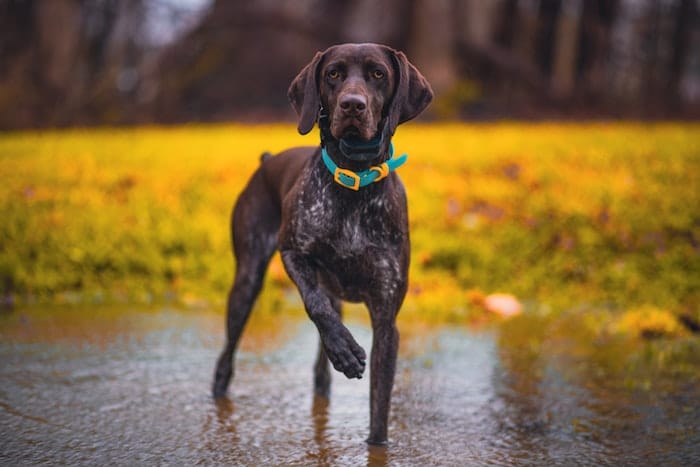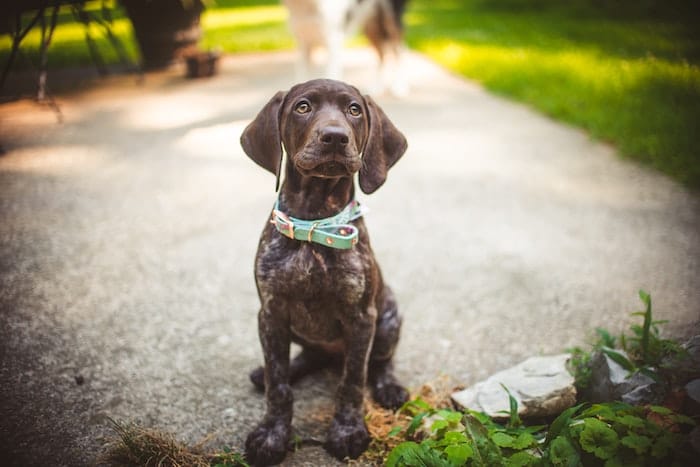Fishing trips are not only enjoyable for humans but can also be an exciting adventure for your furry friend. Just imagine the thrill of casting your line into the water while your dog eagerly awaits the catch beside you.
Ready for a fishing adventure with your pup? Let’s break down everything you need to know about how to go fishing with your dog.

How to Go Fishing with Your Dog?
When heading out on a fishing trip with your dog, it’s essential to make some preparations to ensure a smooth experience for both of you.
Let’s start with some key factors you need to consider:
- Your Dog’s Readiness: Before taking your dog fishing, consider their temperament, behavior around water, and obedience level. If your dog is fearful of water or has not been properly trained, you may need to work on these areas before introducing them to the fishing environment.
- Fishing License: Make sure you have the appropriate fishing license for the area you’ll be fishing in. Many regions require anglers to have a valid fishing license, and some may also require a separate license or permit for dogs accompanying anglers. Check local regulations to ensure compliance and avoid potential fines or penalties.
- Dog-Friendly Fishing Spots: Choose fishing spots that are suitable for dogs and allow pets. Look for areas with easy access to water, minimal hazards, and pet-friendly amenities such as waste disposal stations and designated swimming areas.
- Wildlife Awareness: Be mindful of wildlife in the area, including potential threats such as snakes, insects, or aggressive animals. Keep your dog away from hazardous areas and under close supervision at all times.
- Weather Conditions: Be aware of weather conditions and how they may affect your dog during the fishing trip. Avoid fishing in extreme heat or cold, and be prepared for changes in weather such as rain or strong winds.
Preparing Your Dog for the Fishing Trip
Now when it comes to preparing your dog for a fishing trip, there are several steps you can take to ensure they are comfortable, well-behaved, and most importantly, safe during the outing.
- Ensure Basic Obedience: It’s essential that your dog responds to basic commands such as “sit,” “stay,” and “come” reliably, both on and off-leash. This will help you maintain control in various situations during the fishing trip.
- Introduce Your Dog to Fishing Gear: Familiarize your dog with fishing equipment such as fishing rods, reels, and tackle boxes in a safe and controlled environment. Allow them to sniff and investigate the gear to help them become comfortable with it.
- Acclimate Your Dog to Water: If your dog is not accustomed to being around water, gradually introduce them to it before the fishing trip. Start with shallow areas where they can wade in and gradually increase the depth as they become more comfortable.

Essential Supplies to Pack for Your Dog
In addition to your own fishing supplies, remember to pack the following essential supplies for your dog:
- Life Jacket: Invest in a properly fitted life jacket for your dog, especially if they’ll be near deep water or on a boat. Choose a jacket with reflective strips for added visibility in low-light conditions.
- Water Bowl: Pack a collapsible water bowl to keep your dog hydrated throughout the trip.
- Food and Treats: Pack enough food and treats to last the duration of the fishing trip. Consider bringing portable, lightweight options that are easy to store and serve.
- First Aid Kit: Prepare a first aid kit specifically for your dog, including items such as antiseptic wipes, bandages, tweezers, and any medications your dog may need.
- Comfort Items: Bring along items that provide comfort and familiarity for your dog, such as their favorite toy or blanket. This can help alleviate any stress or anxiety they may experience during the trip.
Safety Precautions to Take When Fishing with Your Dog
Fishing trips with your dog require careful consideration of safety measures to prevent accidents or injuries. Here are some important safety precautions to keep in mind:
- Keep Your Dog on a Leash: Maintain control of your dog at all times by keeping them on a leash, especially in areas with potential hazards or wildlife.
- Supervise Your Dog Near Water: Always keep a close eye on your dog when near water, and never leave them unattended. Be mindful of strong currents, steep banks, and other dangers.
- Be Mindful of Your Fishing Gear: Keep fishing hooks, lines, and other tackle out of your dog’s reach to prevent accidental ingestion or injury. Dispose of used bait and tackle properly to avoid environmental hazards.
- Use a Life Jacket: Ensure your dog wears a properly fitted life jacket, especially if they are new to swimming or will be on a boat. Keep a close eye on them near water bodies to prevent drowning accidents.
- Stay Hydrated: Keep both you and your dog hydrated by bringing plenty of water and taking regular breaks. Watch for signs of overheating or dehydration in your dog, such as excessive panting or lethargy.
- Protect Against Sun Exposure: Provide shade for your dog and apply pet-safe sunscreen to exposed areas, especially if they have short fur or light skin. Avoid prolonged exposure to direct sunlight, especially during peak hours.
- Take Breaks: Fishing can be tiring for dogs, especially if they’re not used to being outdoors for long periods. Make sure to provide opportunities for rest in shaded areas and plenty of breaks for water and snacks.
- Be Prepared for Emergencies: Familiarize yourself with basic first aid techniques for dogs, including CPR, and how to treat common injuries like cuts, scrapes, and insect bites.
Conclusion
Fishing with your dog can be a rewarding experience that allows you to enjoy the outdoors together while strengthening your bond. By following this guide, you can ensure a safe and enjoyable fishing trip for both you and your canine companion.
